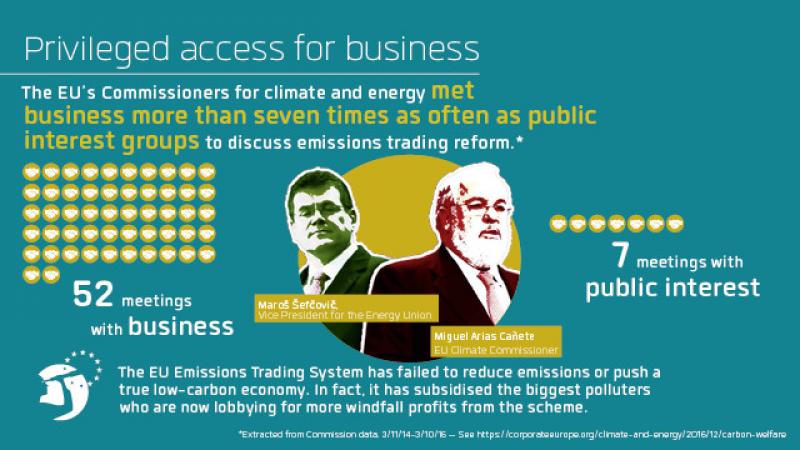
Emissions trading reform: romancing the polluters
There’s nothing very romantic about EU climate policy – even if some environmental groups trailed the European Parliament’s vote on the reform of the emissions trading system (EU ETS) as an occasion for “climate love”. It would be better just to accept a hard truth: it’s not working.
The ETS has been flirting with big polluters since the start. It has awarded billions in subsidies to some of the EU’s dirtiest industries. And the proposals approved by the EU Parliament, which extend the scheme from 2021 to 2030, mean a decade more of cheating on our climate obligations.

So what was actually at stake when Parliament voted on ETS reform? The key controversies focused on proposals from the European Peoples’ Party, the centre-right grouping that is the largest in Parliament, to reduce emissions targets and maximize handouts to polluters. These efforts were successful, with MEPs voting to unpick crucial elements of a “compromise” package agreed by the Parliament’s environment committee (ENVI) in December 2016.
The first big win for polluters was a proposal to reduce the annual target for emissions cuts by industries covered by emissions trading (called the “linear reduction factor”) from 2.4 per cent to 2.2 per cent. Although the latter figure was originally proposed by the European Commission, it has been criticized for falling short of the levels that would be needed to achieve a minimum target of 80 per cent greenhouse gas emissions reductions (compared to 1990 levels) put forward in the 2050 Low-Carbon Roadmap. This leaves the EU a very long way short of meeting its fair share of global climate action.

The EPP and its allies also successfully pushed for the re-inclusion of the cement sector in the long list of industries that receive free pollution permits, which are worth billions of euros and help big polluters avoid having to clean up their act. Cement was never really exposed to international competition (the supposed basis for handing out free pollution permits), but back in 2010-2011 lobbyists for the industry successfully secured free permits anyway. The amendments on cement are particularly outrageous, given that the EU cement industry lags behind most of the world (including India, China and Brazil) in terms of its commitment to reducing emissions.
To add insult to injury, another amendment on “waste gases” means further handouts to the steel sector, another of the industries that has received huge subsidies from emissions trading.
The Parliament vote left supporters of emissions trading clutching at a very small number of straws. While the ENVI Committee’s proposal to cancel 800 million pollution permits survived the vote, that still leaves an additional 1.5 billion surplus allowances untouched. A proposal from Green MEPs to “rebase” the scheme and cancel this surplus was soundly defeated.
Ultimately, it’s important not to lose sight of the big picture: the European Parliament voted through a package that offers massive new handouts to polluters for another decade. The baton is now taken up by the Environment Council on 28 February, followed by a “trialogue” negotiation involving the Parliament, Council (EU member states) and European Commission. The proposals agreed by the European Parliament contain handouts, in the form of free permits and a series of funds (with limited oversight), that could offer big polluters around €198 billion between 2021 and 2030. Historical precedent, and the positions of certain Council members, suggest that the eventual package could see even more concessions to polluters. And there’s nothing to love about that.
 Follow the reform of the EU Emissions Trading System on Twitter: #EUETS #CarbonWelfare and #ScrapETS
Follow the reform of the EU Emissions Trading System on Twitter: #EUETS #CarbonWelfare and #ScrapETS
This story was ammended on 15 February following the European Parliament vote.
